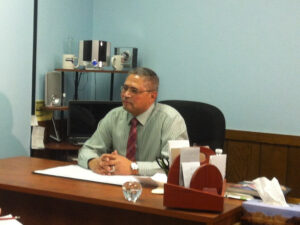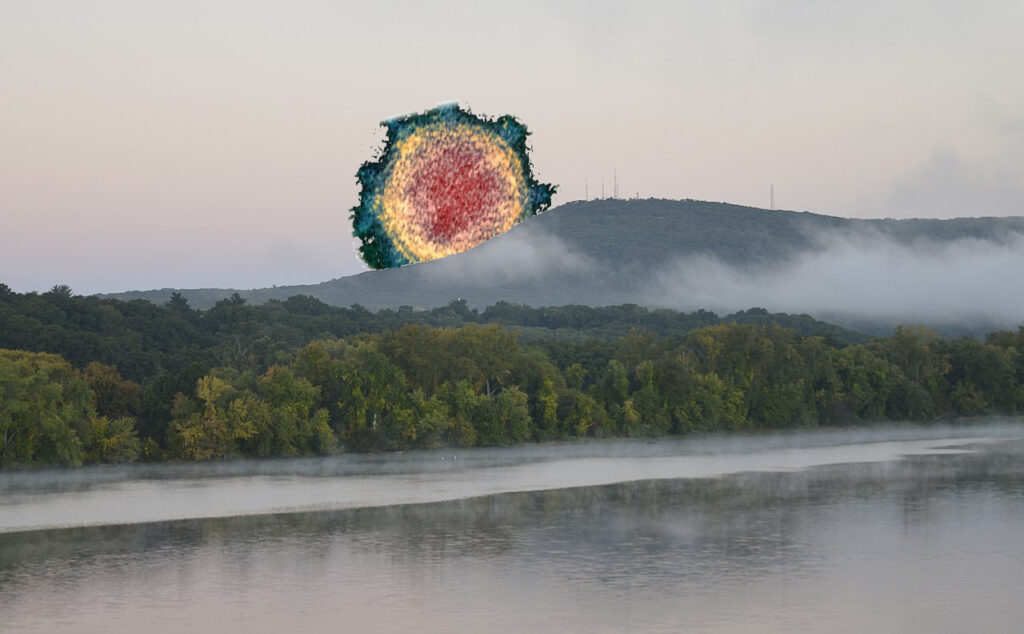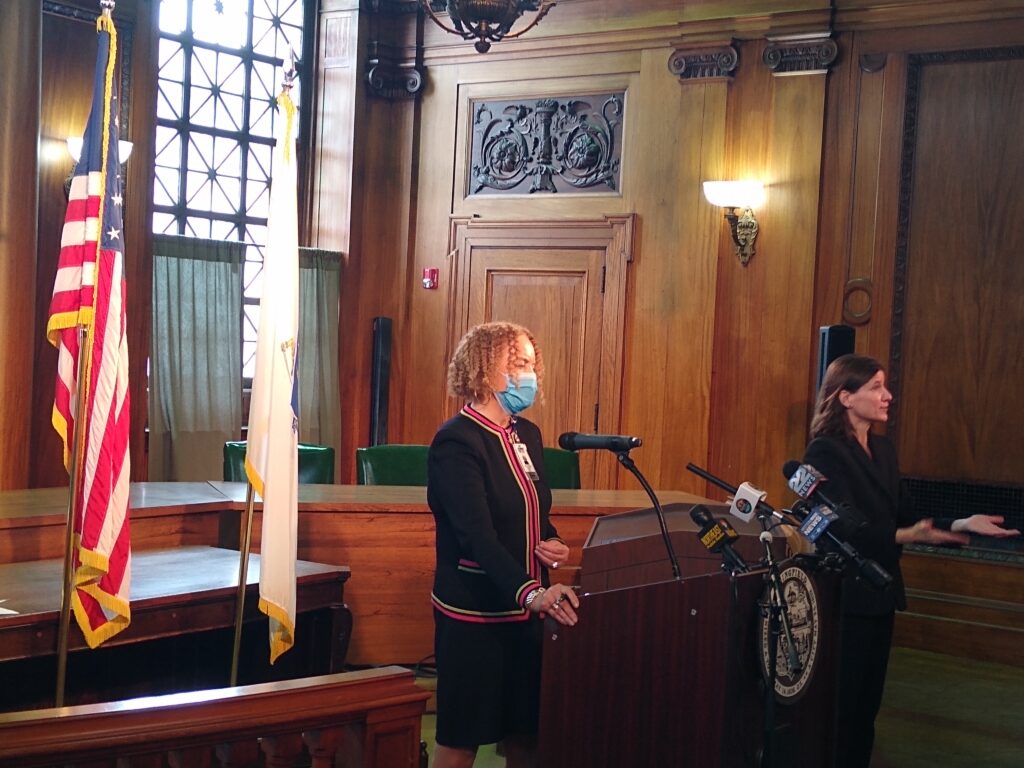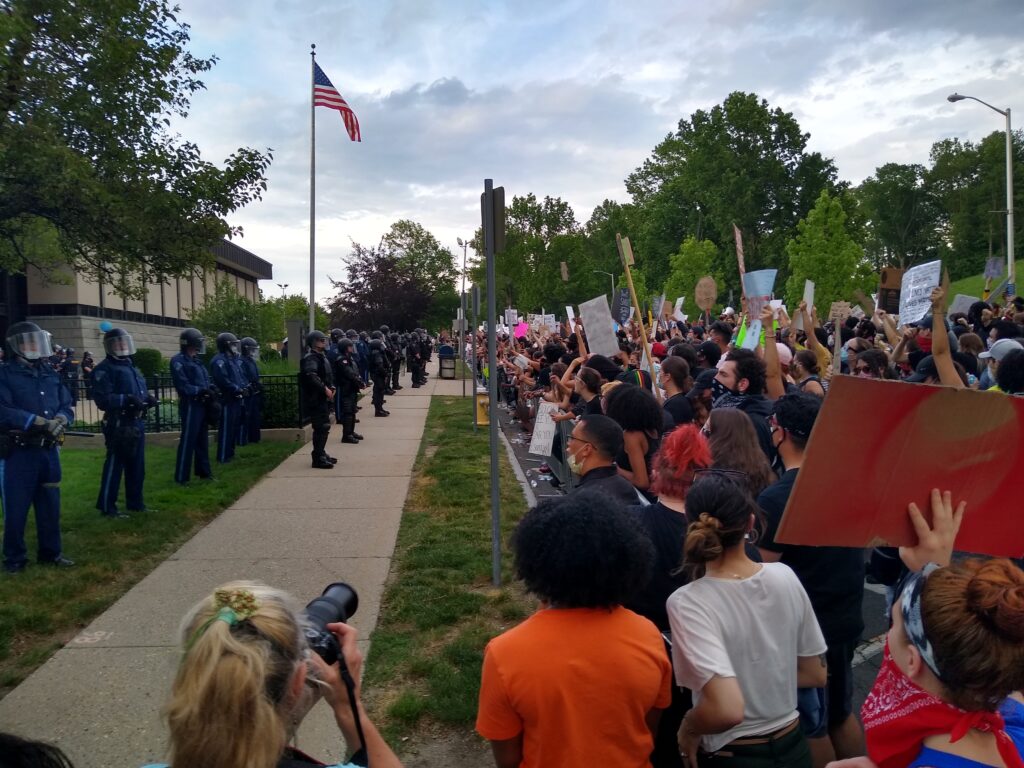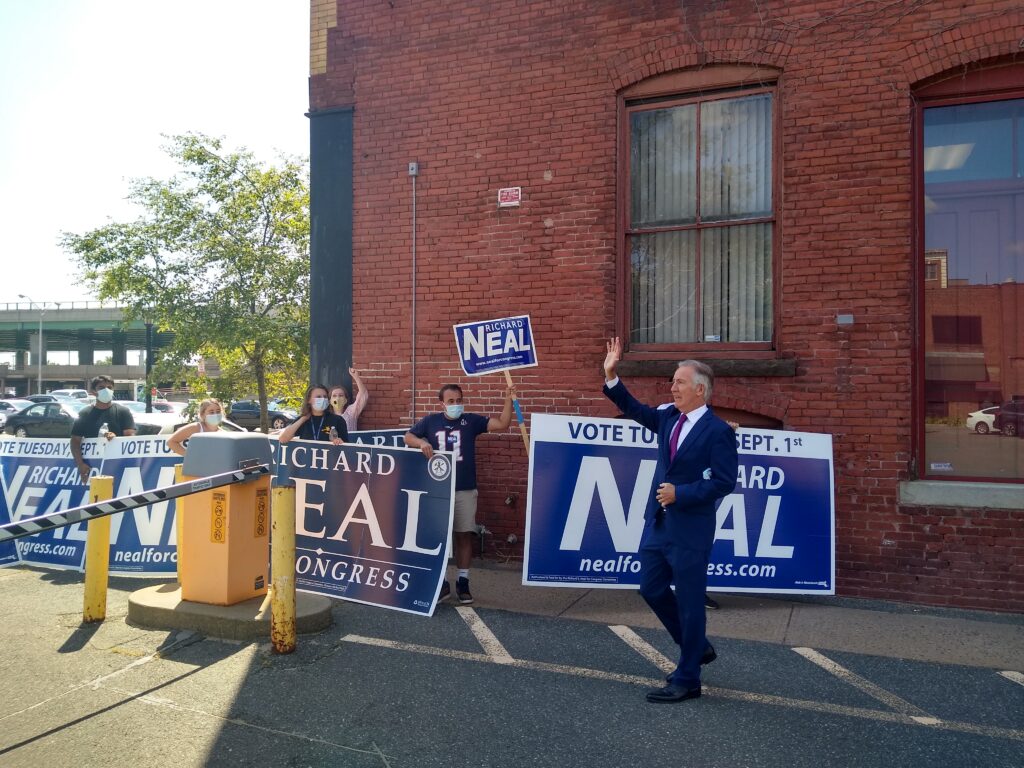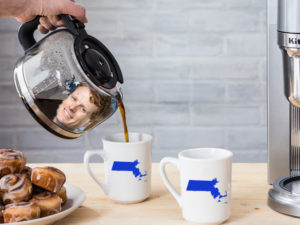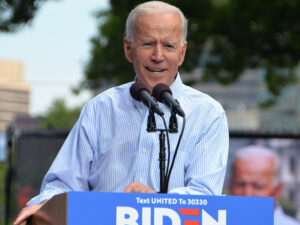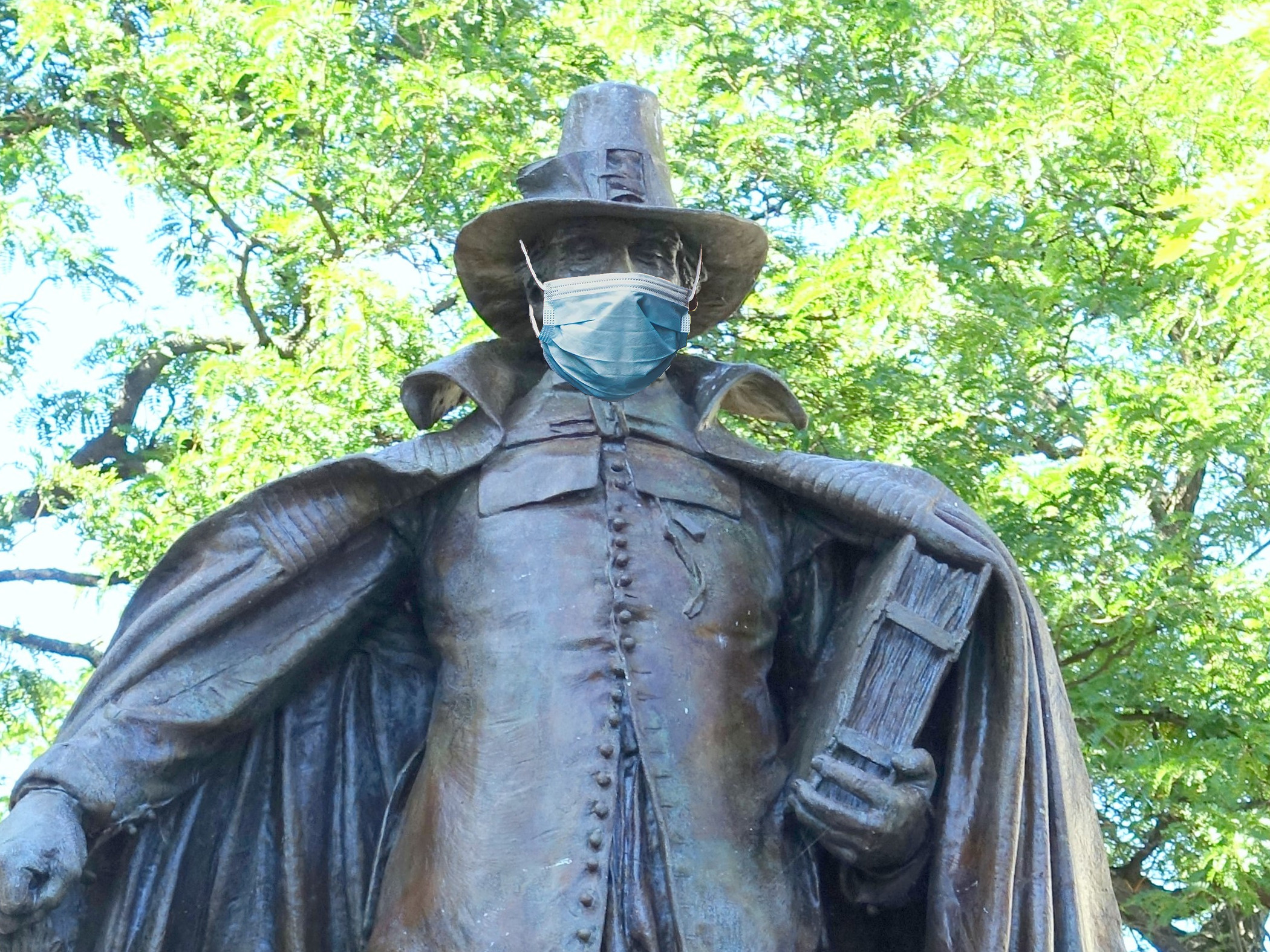The Year in Springfield, 2020…
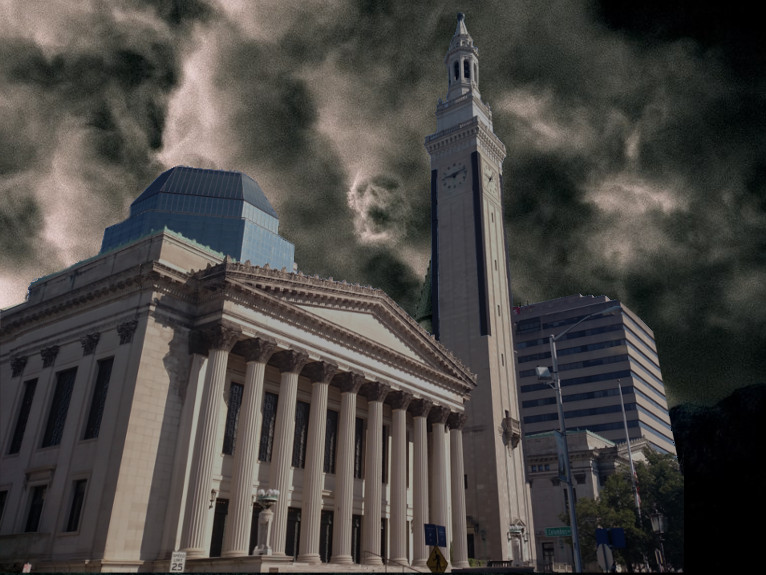
Gee, the clouds forming in 2019 might have lowballed 2020. (created via WMassP&I and Warner Bros. images)
The complete dominance of the coronavirus in Springfield, as with the world, almost compressed 2020 as much as it stretched it out. There were other happening afoot in the City of Homes and its state and nation. Many, however, the virus took over, like the cells it targets, or were lost behind the bright glare of COVID-19.
Indeed, 2020 in Springfield opened with some transition…or not.
Councilors elected in 2019 took their seats, unaware they would spend less than three months physically in them. New faces, Victor Davila and Malo Brown, won open ward seats. Former state rep Sean Curran returned to political life as an at-large councilor. The city’s erstwhile eternal mayor, Domenic began his fifth term in office, besting Daniel Brunton for longest tenure atop Springfield.
As new political careers began one was ending. State Rep Jose Tosado announced his retirement after nearly 20 years serving in various elective capacities in the city. That touched off one of several hotly contested local races in the region.
The race for Tosado’s seat would ultimately draw City Councilor Orlando Ramos, School Committee member Denise Hurst and political activist Sean Mullan. But it would not be the only Springfield-anchored race to materialize. City Councilor Adam Gomez challenged Senator James Welch for the seat that Springfield and Welch’s West Springfield share.
One more rep race materialized in Ludlow with tendrils into Springfield. Longtime rep Thomas Petrolati called it quits. One of only two seats in Western Mass that the GOP could possibly flip, a race formed between Democrat Jake Oliveira and Republican James “Chip” Harrington.
Ongoing from 2019 were federal races. Holyoke Mayor Alex Morse was challenging Springfield Congressman Richard Neal. Newton Congressman Joe Kennedy, III was challenging US Senator Ed Markey. Meanwhile, US Senator Elizabeth Warren was competing for the presidency.
Of the three, Warren’s quest would end earliest. Despite catching fire in 2019, her impressive organizations in Iowa and New Hampshire could not muscle past the advantages both Vermont Senator Bernie Sanders and then-former Vice-president Joe Biden enjoyed. Warren even lost the Bay State and Springfield to Biden on Super Tuesday. Though, as she would say on Saturday Night Live, at least she got to give a billionaire a swirlie on live TV.
This would be among the last hurrahs before the shroud of the coronavirus came crashing down. Italy locked down followed soon after by Europe. Just ahead of St. Patrick’s Day, the Northeast and much of the United States followed. That the world would sleepwalk into the public health crisis will likely astound future generations. Not to pick on him, but days after Biogen became a synonym for petri dish, Massachusetts Governor Charlie Baker went on a ski vacation. (He returned early).

The hero we needed. Taiwanese President Tsai Ing-wen. (via wikipedia)
It is not hard to wonder if action months sooner might have held off the worst. Taiwan was suspicious before last New Year’s. Its second wave peaked at 24 cases in one day even as COVID subsumed countries that had contained the virus like South Korea.
With inadequate personal protective equipment (PPE) and woefully insufficient testing, public health officials and medical personnel alike were flying blind and depressurized early on. The 413, Springfield included, never reached the dangerous position even Metro Boston did. Hospitals filled, but did not reach crisis levels. The lack of PPE was more of a problem than patient volume.
One COVID-19 tragedy would throttle the region and it had Springfield ties. The deaths of 76 veterans at the Holyoke Soldiers’ Home, though hardly the only such facility to face such tragedy even in the 413, became an international example of the toll and the failure to protect the vulnerable. Its superintendent was the scion of prominent Springfield political family.
State officials blamed Bennett Walsh, the son of Springfield City Councilor Kateri Walsh. Locally, the impressions about fault were more mixed. The tragedy at the home seemed a culmination of neglect that had been building at the home. This predated Baker, but worsened under him.
Walsh was suspended, then fired after a damning report from Baker’s hand-picked investigator. Though the Baker administration put as much care into firing Walsh as they did the home pre-COVID. A judge found the firing illegal, but Attorney General Maura Healey later charged Walsh and the Home’s chief medical officer with elder abuse. Walsh resigned, but his story has yet to conclude.
The pandemic all but shut down political campaigning for several months. It accelerated Biden’s lock on the presidential nomination. By mid-April, Sanders had dropped out and would later endorse Biden. Kennedy and Markey fought on via Zoom and Facebook. Morse had a pandemic to manage in Holyoke. Neal, as chair of Ways & Means, oversaw some relief legislation like supercharging unemployment amidst the pandemic.
Like other Massachusetts communities, Springfield government bodies froze, then went online. Budgets were mangled and fiscal doomsday scenarios loomed—mercifully the worst did not come to pass.
Mayor Sarno, flanked with doctors from Baystate and Mercy and his Health & Human Services Commissioner Helen Caulton-Harris provided regular updates. For the most part, its role was closing city offices and school and enforcing gubernatorial orders. The biggest concerns within the city’s control was the plight of the homeless. After much delay, they were tested and found to be largely virus-free, a catastrophe averted.
But the virus did not change some things. Under cover of the claim that the city needed every able-bodied cop, Police Commissioner Cheryl Clapprood reinstated five officers facing trial for their role in the Nathan Bill’s incident. Sarno would stand by the decision until the death of a man 1500 miles away.
When a Minneapolis police officer laid his knee on a man they had detained, little did anyone know where it would lead. George Floyd would die after the encounter, unleashing a wave of pent-up frustration and energy across the country. Marches and demonstrations filled the nation’s streets, protesting the persistent unequal treatment of people of color.
Donald Trump chose to meet these protests with tear gas and a bible. Sarno did not do that. He backtracked on the police reinstatements and offered olive branches. Other resources could address some issues that lawmen are ill-prepared to handle, such as mental illness. An Office of Racial Equity was funded. However, Sarno refused to budge on a lingering standoff that preceded Floyd’s death by years.
His continued refusal to implement the Police Commission had both frustrated local reformers, but also gave them a tangible local demand. “Defund the Police” never became a thing in the city—though Sarno would try to link it to totally legitimate doubts about a sketchy shooting range lease.
But the City Council would find legal counsel, at long last. He would press his compromise, which was actually a capitulation for the Council and reformers, but a near-unanimous Council could and would vote to sue him for enforcement.
Another loud thud came when Massachusetts US Attorney released his years-long investigation into the narcotics bureau at Pearl Street. He would later say that the situation was severe enough that he lobbied then-US Attorney General Bill Barr to open the Trump administration’s only patterns & practices investigation into a police department
As the virus abated a bit, campaigns re-awoke. Yet, campaigns for rep and senate seemed to fade out entirely, with no in-person events. There were zoom meetings and whatnot, but little opportunity for incidental public exposure. The federal campaigns were something different.
Though energized a bit by progressive victories elsewhere in the nation, Morse could never seem to catch up with Neal. Even as his allies began pounding the incumbent on the airwaves—which Neal easily matched—nothing felt like it was moving on the ground. Still, even the most studied of Valley politicos observing the maelstrom doubted the inevitable.
What would blow up the race was a series of claims from state College Democrats about Morse’s behavior. None of it was illegal or even that lurid, but it was enough to explode, coupled with accusations that homophobia fueled it The imbroglio drew in the state Democratic party, but the national attention supercharged Morse’s campaign. It would be for naught. Neal won the primary by 18 points, much in line with expectations as his campaign would claim.
Kennedy, too, would fail. Backed by a phalanx of establishmentarians and Green New Deal activists, Markey proved too strong. Moreover, Kennedy’s call for change had simply not coagulated enough for many voters—outside of certain regions.
Kennedy made considerable investments in time and organization out west, including its communities of color—though Markey did not surrender the occident. Kennedy won Hampden County handily. Springfield was one of the places he did best in.
Turnout surged in this primary. That benefited Neal and Kennedy in Springfield, but also Gomez who knocked off Welch in perhaps the primary’s biggest surprise. He will become the city’s first Latino senator and Springfield’s first resident senator since 2004. In Tosado’s seat, Ramos claimed victory. He attributed it partly to his decision to hit the doors. While nationally many Democrats avoided this, some semblance of a field program would become key to most races in Massachusetts.
Until September, Springfield fended off the worst of the virus. By then resolve against the virus dropped alongside the mercury. The city shifted from green to yellow to red. Its schools never reopened, even on a hybrid basis. An outbreak gripped Baystate Medical Center. Plus, it had taken too long for the state to fund a public testing site in Springfield.
Meanwhile, as virus conditions worsened, Baker would be slow to act. It would not be until November that a serious statewide curtailment of permitted activities was ordered.
On Election Day, Springfield’s turnout maintained its recent historical high. However, compared to the primary, the city broke no records, other than in early voting and mail-in balloting. Little was competitive on Springfield ballots in the general. Markey beat his GOP challenger. Biden owned Trump, though the latter captured more votes than he did in 2016. Oliveira would win his race, albeit after a partial recount Harrington sought.
Of course, the big win was at the top. After a scary few hours when it appeared Trump might repeat his 2016 feat, Biden took the lead in the Electoral College and never looked back. His cemented his position in Pennsylvania. Networks called the race the Saturday after the election. Celebrations broke out in cities across the nation. Not so much in Springfield.
Still, the virus began roaring ever more. Caulton-Harris pleaded with Springfield residents to take care and avoid the spread. More testing sites opened in the region, relieving pressure from Springfield’s sites. But the cases continued to flare, first after Halloween, then Thanksgiving and, after some ebb in December, again following the Nativity.
Governor Baker ordered more restrictions. Some open-ended, some explicitly temporary. A lot remains open in Springfield and Massachusetts compared to the West Coast and Europe. However, also in December, vaccine to the novel coronavirus received approval. Baystate and Mercy have received the doses and begun inoculations. The city is planning inoculation drives when even more doses are available. Congress finally passed and Trump finally signed more aid.
The last political act in the city came when, after an unusual process, Marcus Williams was elected the next Council President. Tracye Whitfield will be the first woman of color to be vice-president. For historical context, only three women of color have ever been Springfield city councilors.
Even with vaccines, a brutal winter awaits the city. Deaths are inching up again and it will be weeks before more of the city’s vulnerable receive the shot, let alone the general public. Both the city and state still need fiscal relief from Washington. Republicans refuse to grant it, claiming it was a bailout for something non-COVID related. That is a lie.
Perhaps Springfield weathered the COVID-era better than many cities of its ilk. It often enters new years with a mix of trepidation and promise. Such is the plight of the City of Homes. But perhaps never before have the fear and hope been so coincidental and so stark.
